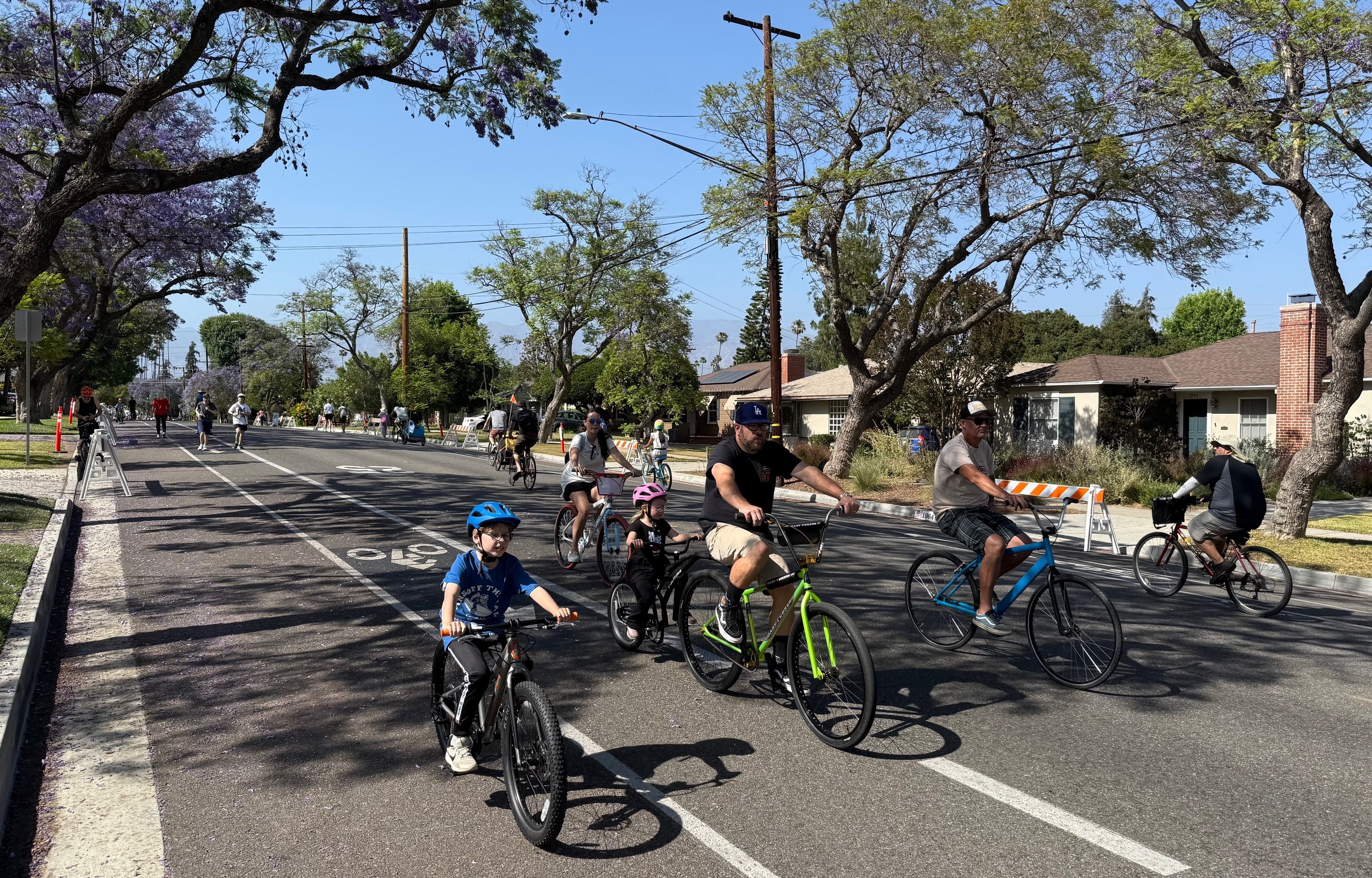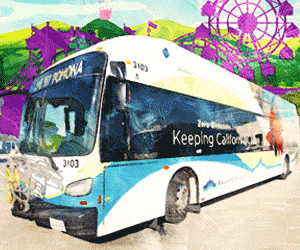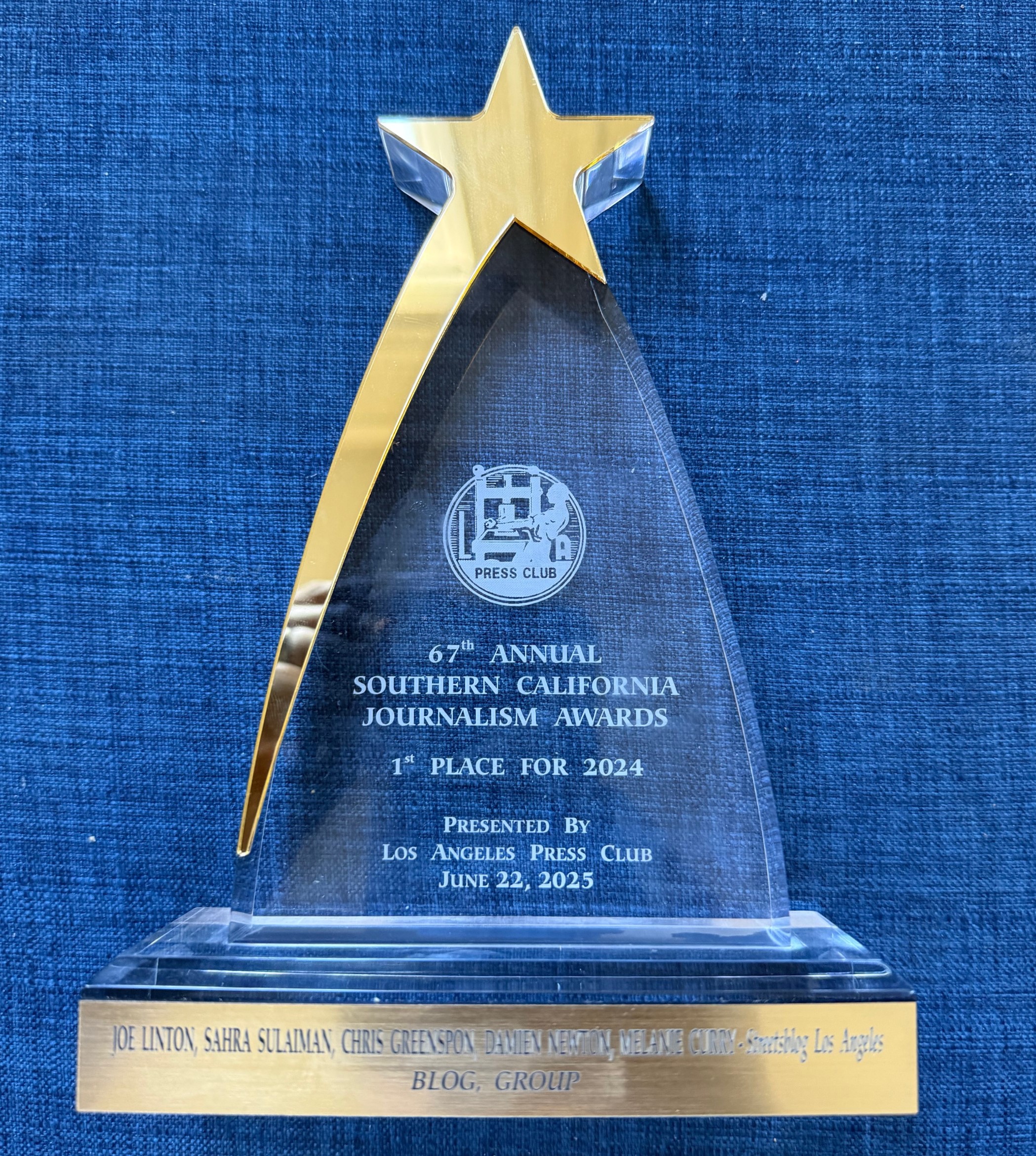(Earlier this week, Gloria Ohland reviewed what happend at last week's T.O.D. Conference hosted by the Urban Land Institute. Today, Stephen Box takes a different look, and examines what was missing. - DN)
 Photo: Stephen Box
Photo: Stephen BoxThe Urban Land Institute's (ULI) Transit Oriented Development (TOD) Summit, held last Friday at the Hollywood & Highland's Renaissance Hotel,
was as notable for what didn't happen as it was for what actually took
place. As could be expected, hundreds of people representing local
governmental authorities, agencies, and departments mixed it up with
consultants of many flavors along with politicos of all stripes. This
was, after all, a celebration of the future of TOD.
The ULI-TOD
Summit also, inadvertantly, served as a metaphor for what's wrong with
the TOD landscape in our community, in our city, and in this country; a
focus on the big picture at the expense of the individual or personal
experience. In other words, high-altitude, big-picture solutions that
lack attention to details.
This Summit came complete with Senator Barbara Boxer's lunchtime announcement of Transportation Secretary Ray LaHood's endorsement of LA's 30/10
plan to leverage anticipated transit revenue in order to fast-track a
dozen significant regional transit projects. Definitely huge! Along the
way, the feds were represented, the state was represented, the county
was represented and the City of LA's City Council President Eric
Garcetti joined the feeding frenzy to add his blessings to the TOD
lovefest. Attendees rubbed elbows with financiers, developers,
consultants, innovators, real estate brokers, contractors and all of
the many partners who work together to bring the magic of TOD to life,
or at least to the ribbon cutting ceremony.
Missing from the
Summit was an acknowledgment that the most important element in TOD
projects is the individual's experience. Granted, everything is
important and everybody contributes in their own special way, but the
unique and personal perspective of the individual must never be lost in
the awesomeness and hugeness of TOD. Unfortunately, losing that human
touch is the norm, not the exception.
The simple process for registering for the TOD Summit demonstrated the Transit Oriented Disconnect
that is all too common, offering driving instructions and parking
instructions in first position. No mention is made of accommodating
those who might arrive on a bike. For those who might attempt to ride
the Metro, there are incorrect instructions and no wayfinding tips once
out of the station. One would think that TOD Summit attendees, of all
people, would be most likely to use mass transit but apparently not. It
must be an acquired taste.
The Summit itself was loaded with
breakout sessions that ranged from "The Money Train" to "Planning
Objectives" to "Financing Tools" to "Green House Gas" to "Public
Private Partnerships," demonstrating a huge bias in favor of the "deal"
and a lack of sensitivity to the personal experience of the individual.
There was a gesture in the right direction with the "Placemaking"
session, led by architects who use words such as "thoughtful" and
"enhance" and "vibrant" to describe their work.
There were
three TOD tours offered to attendees, featuring the Hollywood &
Highland facility, the Wilshire & Vermont project and the new
Hollywood & Vine Fortress. Unfortunately, the TOD tours were unable
to uncover any of the thoughtful and vibrant enhancements that might be
used as evidence of a sensitivity to the needs of the individual.
Missing
from the tour was an example of the intersection improvements that
would encourage pedestrians to cross the busy streets that surround all
three TOD projects. No ped scrambles, no bulb-outs, no refuge islands,
no enhanced signalization, nothing.
Missing from the tour was
an example of any improvements that would accommodate cyclists and
allow passengers to close transit gaps, as well as residents who might
use a bike for local trips, and also cyclists who shop at the TOD
businesses. Unfortunately, no bike racks, no bike storage facility, no
bike signage, nothing at all.
Missing from the tour was an
example of any innovations in wayfinding, not just to help lost
tourists find their way around the neighborhood, but to support the
local economy by encouraging people to experience more of the
surrounding community. Granted, there is signage, albeit outdated,
confusing, and oriented in the wrong direction. Worse than nothing!
Missing
from the tour was an example of any innovations in public space,
pleasing and comfortable at the personal level. The brochures for the
featured TOD tours offered aerial pictures of the projects, something
the individual on the ground doesn't experience. Missing was a tour of
shaded benches, tranquil resting spots for weary travelers, safe space
for a parent with restless children, a meeting place for friends, or
any of the other Great Space elements that bring that purported
commitment to the personal experience to life. Again, nothing.
Missing
from the tour was an example of how public facilities (rest rooms) can
be incorporated into the design and operation of a large TOD.
"Customers Only" is the traditional greeting on Hollywood Boulevard, in
contrast to the TOD experience of tourists, families with small
children, commuters, and customers in other parts of the world. The
Hollywood & Vine experiment with restrooms has already failed,
resulting in the closure of the ill-positioned and poorly maintained
facilities and allowing the Metro to shrug and offer "I told you
restrooms were a bad idea!" as the latest innovation in TOD comforts.
Less than nothing.
Missing from the tour was an example of how a
TOD can connect with the surrounding community, drawing people in and
creating a destination, not simply a transit hub. All three TOD tours
took place in facilities that have fortress-like qualities that create
great space with fantastic amenities for those on the inside, but at
the expense of that infamous "conversation" with the street.
"Womb-like" is the experience once one is inside the W Hollywood
compound, allowing the guest to experience a spectator's vantage point
of Hollywood Boulevard and the surrounding city. As for connectivity,
nothing.
Missing from the tour was a demonstration of how TOD
projects can be more than simply an innovation in real estate
development, structural engineering, and housing funding, but in the
creation and support of Great Communities. No mention was made of the
standards that must be established to ensure that TOD projects are not
simply development tools, but that they are significant commitments to
making LA a Great City. As for standards, nothing.
The
Urban Land Institute is made up of 40,000+ members around the world,
including developers, builders, engineers, attorneys, planners,
investors, financial advisors, academics, architects and public
officials. Their commitment to providing leadership in the responsible
use of land and in creating and sustaining thriving communities
worldwide is significant. Last week's ULI TOD Summit bears witness.
But...
Beware the Developocrat! The Metro has 32 TOD projects in
play with a total of 50 on paper. Once funded, there is no turning
back. There is an impending battle looming on the horizon and when
DIMBY (Developer in My Back Yard) meets NIMBY, the community will
suffer. Now is the time to find the middle ground, to celebrate the
impending arrival of the Money Train by doubling down on the
development and implementation of TOD standards that put the personal
experience of the individual back where it belongs, in the center of
the TOD Vision.






